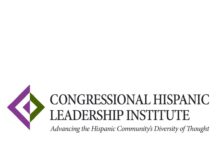PRINCETON, New Jersey, Oct. 12, 2015 /PRNewswire-HISPANIC PR WIRE/ — Bilingual individuals, who can read and write in English and their native language, drop out of high school at lower rates, enter higher status occupations, and can earn more than those from immigrant backgrounds who only speak English according to a new study released today from the Civil Rights Project at UCLA and Educational Testing Service (ETS).
Logo – http://photos.prnewswire.com/prnh/20120110/DC33419LOGO
“Balanced bilinguals,” those who understand, speak, read and write in both English and the language of the home:
- earn more, whereas monolinguals lose $2,000–$5,000 annually as a result of losing their home language.
- go to college at higher rates, which dramatically increases earnings.
- have more social networks.
“Today’s young language minority population is unique; their experiences have made them distinct from previous generations, and not only with respect to their access to social media and entrance into a global economy,” says the report’s author Patricia Gándara, of the Civil Rights Project/Proyecto Derechos Civilies at UCLA. “Children of immigrants today are coming of age in a majority-minority era. Their linguistic and cultural cache is becoming a greater part of the fabric of America, and employers increasingly prefer employees who can reach a wider client base and work collaboratively with colleagues across racial, ethnic and cultural lines.”
Gándara’s report, “Is There Really a Labor Market Advantage to Bilingualism in the U.S.?,” draws upon new and different data sets and studies that follow young people (children of immigrants now in their late-20s and early-30s) just entering the labor market providing a more accurate measurement of bilingualism and “biliteracy” than have prior studies.
Growth in other-than-English language speakers has been dramatic over the last three decades according to Gándara; from about 23 million persons in 1980 to nearly 60 million today. And while the latest census data show that the nation is increasingly bilingual, what is not well documented is the extent to which bilingualism is being acquired by native English speakers.
Gándara cites the explosion of dual-language programs across the country and the growth of international baccalaureate programs that require competence in two languages as proof of growing interest. She also notes a U.S. News & World Report article that argued that maintaining and teaching languages others than English will be key to the success of the nation’s schools in the coming century.
“Our findings that balanced bilingualism or ‘biliteracy’ pays and results in better educational outcomes is good news,” says Gándara. “Equally important though is the finding that transitional bilingual instruction that leaves behind the native language is not where the payoff is; it is in maintaining immigrant languages. Bilinguals may not always be paid more, but they often are and frequently get hired over monolinguals with similar credentials.”
“Americans for whom English is not their first language face unique obstacles on their path to academic and economic success,” says Michael Nettles, Senior Vice President of ETS’s Policy Evaluation & Research Center who commissioned the research and paper. “This report highlights the benefits that can accrue to all students through dual language programs.”
It is important, Gándara cautions, to acknowledge that the present day Spanish-speaking population is extremely diverse in history, region, socioeconomic status, education and literacy. “All of these factors result in different experiences in the labor market so that it is not possible to draw conclusions about a single Hispanic group.”
In 2012, ETS entered into an agreement with the Civil Rights Project to commission a set of original papers to investigate, from different disciplinary perspectives, the labor market implications of bilingualism in the United States. Those studies are published in a new book titled, “The Bilingual Advantage: Language, Literacy and the US Labor Market.”
The report released today is a companion to that book that begins with reviews of studies looking at the history of discrimination against languages other than English and differences in Hispanic subgroups, earnings and literacy. Some studies confirmed that bilingualism does not pay, while others even found a small wage penalty for the average bilingual working male. Others found what appeared to be a glass ceiling where monolingual workers were more likely to hold higher-ranking jobs than bilingual workers with similar education and experience. But those studies were all based on census data that did not reveal the level of bilingualism held by individuals.
Gándara will discuss her findings at a free webinar on Tuesday October 13. Click for additional details and registration. Click here for a downloadable PDF of Gándara’s study. Copies of the book “The Bilingual Advantage: Language, Literacy and the US Labor Market,” can be ordered from Multilingual Matters.
About ETS
At ETS, we advance quality and equity in education for people worldwide by creating assessments based on rigorous research. ETS serves individuals, educational institutions and government agencies by providing customized solutions for teacher certification, English language learning, and elementary, secondary and postsecondary education, and by conducting education research, analysis and policy studies. Founded as a nonprofit in 1947, ETS develops, administers and scores more than 60 million tests annually — including the TOEFL® and TOEIC ® tests, the GRE ® tests and The Praxis Series ® assessments — in more than 180 countries, at over 9,000 locations worldwide. www.ets.org
About the Civil Rights Project
Founded in 1996 by former Harvard professors Gary Orfield and Christopher Edley, Jr., the Civil Rights Project/Proyecto Derechos Civiles is now co-directed by Orfield and Patricia Gándara, professors at UCLA. Its mission is to create a new generation of research in social science and law, on the critical issues of civil rights and equal opportunity for racial and ethnic groups in the United States. It has commissioned more than 400 studies, published 14 books and issued numerous reports from authors at universities and research centers across the country.






